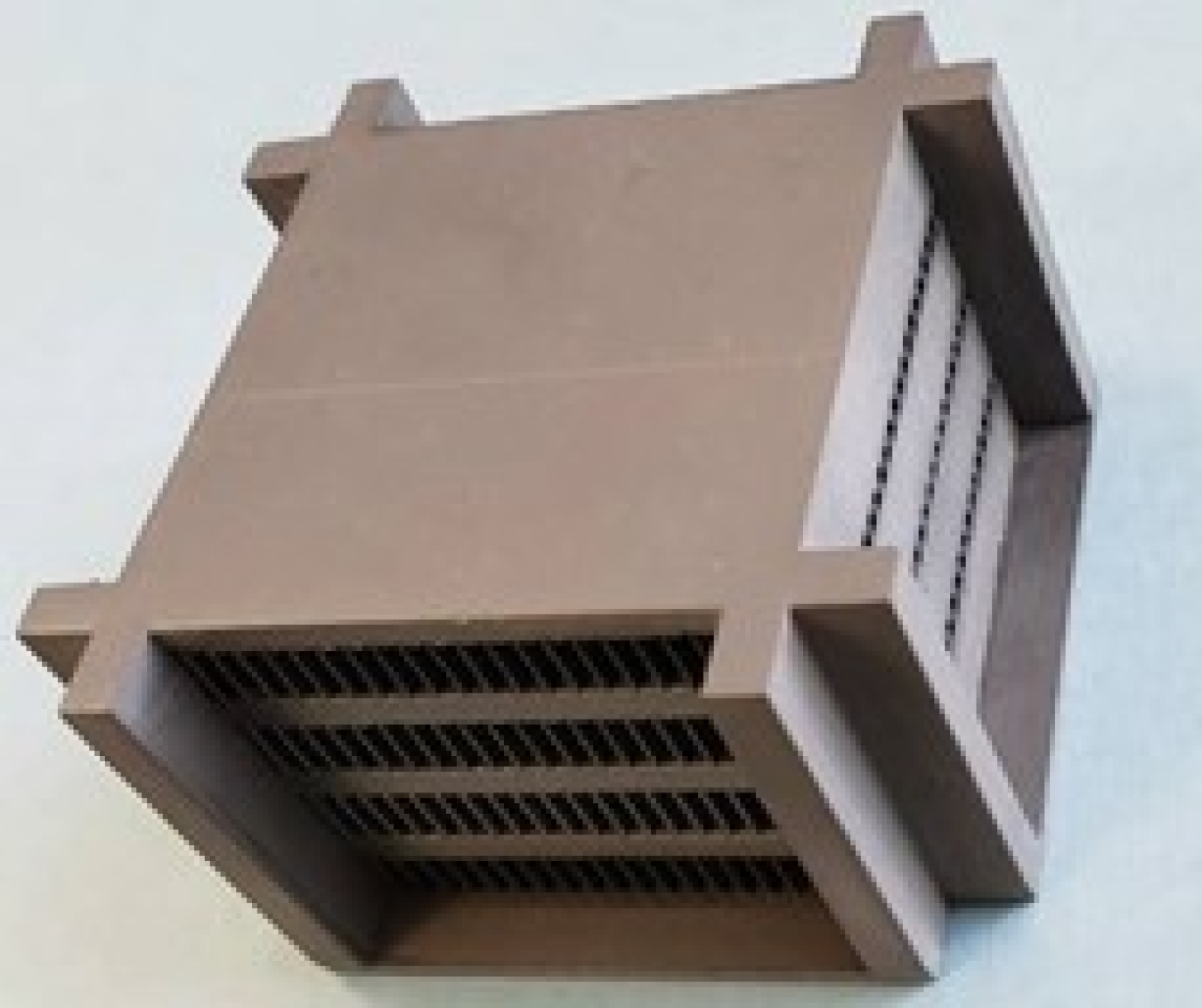Lead Performer: Technology Assessment and Transfer Inc., Annapolis, MD
September 29, 2021
Lead Performer: Technology Assessment and Transfer Inc., Annapolis, MD
DOE Total Funding: $199,898
Project Term: June 28, 2021-March 27, 2022
Funding Type: Small Business Innovation Research (SBIR) Phase 1
Project Objective
The DOE Building Technologies Office has supported a broad spectrum of advanced technologies to reduce energy demands of commercial and residential buildings. The development of a more efficient, durable heat exchanger (condensers and evaporators) for air conditioners and heat pumps has been a continuing objective of the office. The higher thermal conductivity, dimensional stability, low thermal expansion, corrosion resistance and light weight of ceramic heat exchangers offers major advantages compared to polymer and high temperature metal versions.
The primary objective of this effort is to demonstrate that Digital Light Projection (DLP) 3D Printing enables the fabrication of alumina microchannel heat exchangers with higher heat transfer and leakage free features that cannot be achieved with conventional metal heat exchanger fabrication methods.
The specific objectives:
- Develop predictive models of compact heat exchanger designs with exceptional performance.
- Establish DLP AM protocols for a plain fin alumina heat exchanger design.
- Evaluate performance (heat transfer and pressure drop) of plain fin alumina heat exchanger and compare with modeling predictions.
- Demonstrate DLP fabrication of high-quality enhanced heat exchanger designs via experimental performance measurements.
The above objectives will be achieved via the following tasks:
- Model compact heat exchanger designs for DLP AM that predict thermal performance improvements over traditional sheet metal designs.
- Fabricate sub-scale DLP heat exchanger designs.
- Measure performance (pressure drop and heat transfer) in a low-speed air-flow wind tunnel.
- Compare performance to modeling predictions.
- Identify dimensional shortfalls relative to design requirements, fabricate high heat transfer designs and validate performance.
- This was an empty link: Analyze all the results and proffer recommendations for accelerated, scale up Phase 2 effortAnalyze all the results and proffer recommendations for accelerated, scale up Phase 2 effort.
Project Impact
Reducing the energy consumption of heat pumps and air conditioners means more resource efficient design and operation of residential and commercial buildings. Energy savings translates into reduction in demands on the electric grid, lessening the likelihood of brown outs and associated financial impacts on families and companies. The combination of higher thermal conductivity and 3D-printed alumina heat exchangers will result in following benefits: increased heat transfer efficiency and reduced size, material and energy costs compared to current heat exchangers used in heat pumps and air conditioners. These advanced heat exchangers will extend the life of heat pumps and air conditioning systems, producing economic benefits for residential and commercial customers in addition to improved air quality, health, and COVID-19 mitigation benefits.
These unique ceramic heat exchangers offer spinoff opportunities for industrial waste heat thermoelectric generators, automobile, truck and aircraft engine heat recovery, geothermal heat recovery, electronic power modules, radar, laser, and other systems with substantial cooling needs.
Contacts
DOE Technology Manager: Fredericka Brown
Lead Performer: Larry Fehrenbacher, Technology Assessment and Transfer

